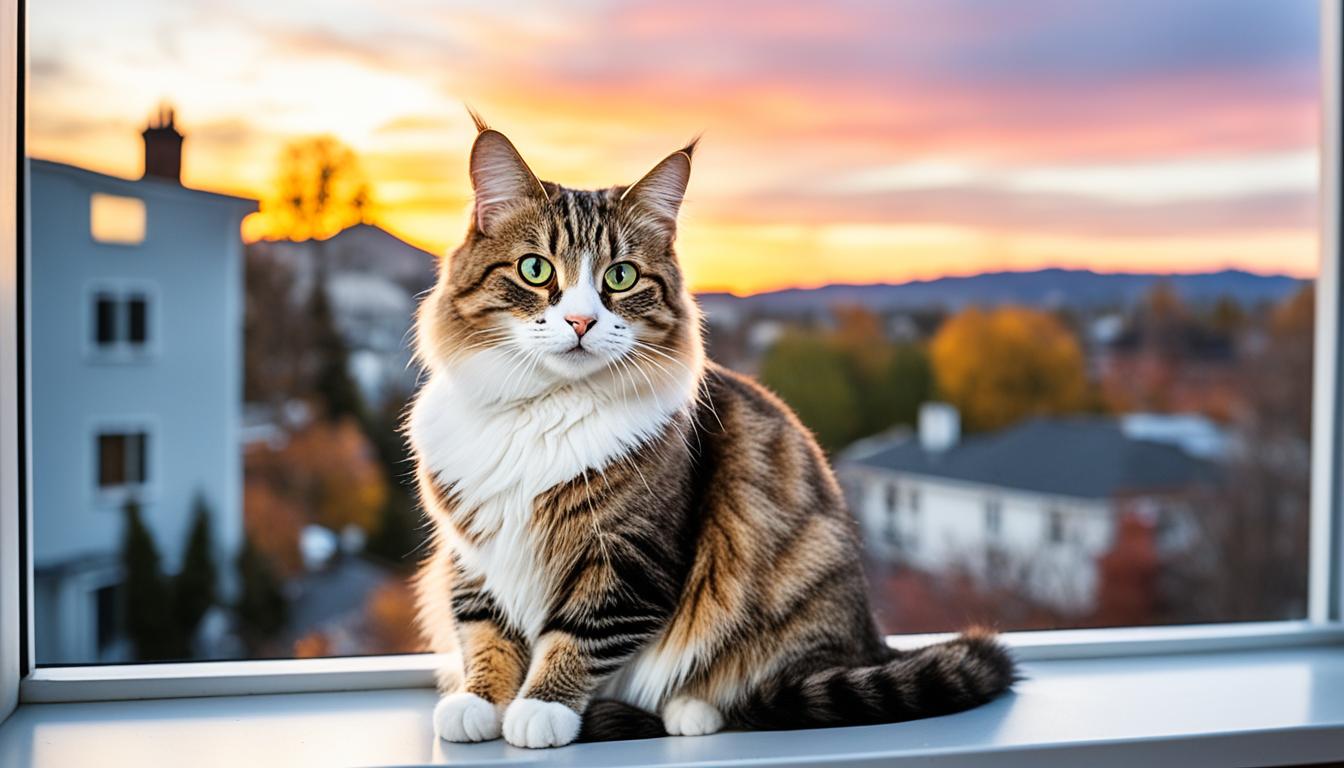Just like humans, cats have their own unique way of communicating. Understanding your cat’s body language is crucial for building a strong bond and ensuring their well-being. By interpreting their signals and decoding their gestures, you can gain valuable insights into their emotions and mood.
Cats communicate through a combination of body postures, expressions, vocalizations, and tail movements. Paying attention to these cues can help you better understand what your feline friend is trying to convey.
Key Takeaways:
- Interpreting cat body language is essential for understanding their emotions and intentions.
- Context is crucial when deciphering cat signals, as cues can vary depending on the situation.
- Pay attention to your cat’s posture, tail movements, and vocalizations to gain insights into their mood.
- Confident cats display open postures, while anxious cats tend to exhibit closed or defensive postures.
- A cat’s tail position is a barometer of their confidence level and can indicate fear, aggression, or comfort.
By familiarizing yourself with your cat’s body language, you can enhance your relationship and create a harmonious environment where your feline companion feels understood and loved.
Posture/Body Position: Open or Closed?
A cat’s body posture and position can reveal a lot about their mood and emotional state. Just like humans, cats use their bodies to communicate their feelings. By understanding and interpreting their body language cues, you can gain valuable insights into your cat’s state of mind. In this section, we will explore the various postures and positions that cats adopt and what they signify.
A confident cat tends to have an open and relaxed posture. They will often stretch out their limbs and tails away from their body, indicating a sense of comfort and security. When a cat is feeling confident, their body appears loose and at ease. This is a positive sign that your cat is content and comfortable in their environment.
On the other hand, an anxious or fearful cat may exhibit closed postures. This includes crouching down low to the ground or scrunching up into a ball. These closed postures indicate that your cat is feeling stressed or threatened. It’s important to create a safe and comfortable environment for your cat, providing them with access to high perches and hiding spots, to help them feel more secure and reduce their anxiety levels.
Understanding your cat’s body postures is key to building a strong bond and communication with them. By paying attention to their posture and responding accordingly, you can create a supportive and enriching environment for your feline companion.

The Tail: A Barometer of Confidence
A cat’s tail is a reliable indicator of their mood and confidence level. When a cat holds their tail high and vertically, it usually signifies that they are feeling confident, comfortable, and friendly. This tail position often accompanies an open and relaxed body posture.
Conversely, a cat with a low tail position is likely experiencing fear or anxiety. A low tail can indicate that the cat feels threatened or unsure in their environment. It is important to approach a cat with a low tail cautiously and provide them with a safe and reassuring space.
A cat’s tail movements can also communicate various emotions. For example, a cat may puff out their tail or rapidly thrash it when feeling aggressive or territorial. Observing the context in which these tail movements occur is crucial to accurately interpret a cat’s emotions.
By paying close attention to your cat’s tail, you can gain valuable insights into their current state of mind. Understanding cat tail movements and positions allows you to adjust your interactions accordingly, providing the appropriate level of support, comfort, and reassurance when needed.
FAQ
How can I understand my cat’s body language?
Cats communicate through their body language, so it’s important to pay attention to their postures, tail movements, and vocalizations. By observing these cues and considering the context, you can better understand your cat’s emotions and intentions.
What does it mean when my cat has an open posture?
When a cat has a relaxed and open posture, with limbs and tail stretched out away from their body, it usually indicates confidence and comfort. This shows that your cat is feeling safe and content in their environment.
How can I tell if my cat is anxious or fearful?
An anxious or fearful cat may exhibit closed postures, such as crouching down low to the ground or scrunching up into a ball. They may also display signs of nervousness like hiding, avoiding eye contact, or excessive grooming. Creating a safe and comfortable environment with hiding spots can help alleviate their anxiety and make them feel more secure.
What can I learn from my cat’s tail movements?
A cat’s tail is a reliable indicator of their mood and confidence level. A high, vertically lifted tail usually means they are feeling confident, comfortable, and friendly. Conversely, a low tail can indicate fear or anxiety. Tail movement like puffing it out or rapid thrashing can suggest aggression or territorial behavior. By observing their tail, you can gain insights into their current state of mind and adjust your interactions accordingly.

